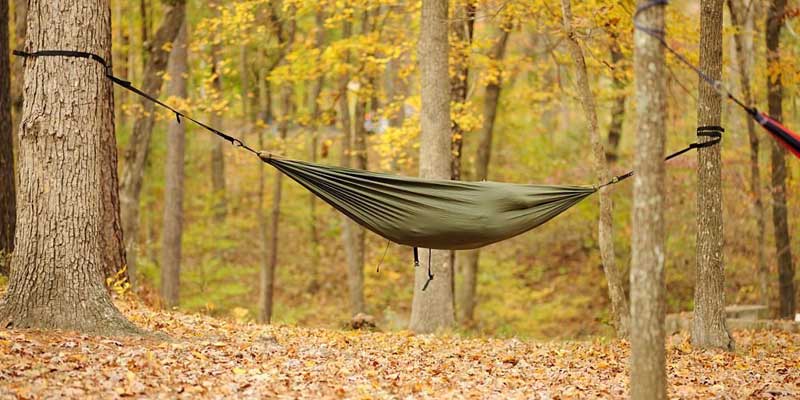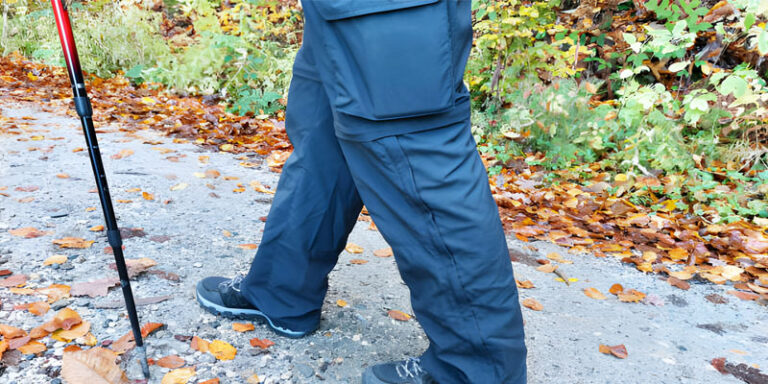Using a sleeping pad in a hammock is described as a challenge by some hammock campers. But you don’t have to worry about it. Using a sleeping pad in a hammock is not as hard as it sounds. You just have to be mindful of some things and you can have a smooth experience. Yes, a sleeping pad may not be able to give you as smooth of an experience as an underquilt, but it would still hold up very well. The low price and the versatility of a sleeping pad can give an underquilt a run for its money.
Why Use A Sleeping Pad In A Hammock?
All hammock campers agree that underquilts are a better option to keep yourself warm during the night in a hammock. It is a comfortable way that stays out of your way. So, why would you use a sleeping pad in a hammock? Here are a couple of reasons for using a sleeping pad instead of an underquilt.
A Budget Option
Underquilts aren’t cheap. An entry-level underquilt would easily cost you above $150. While you can get a quality closed-cell foam sleeping pad for below $50. Many people can’t afford an underquilt so they make do with a sleeping pad. After all, the purpose is the same, provide insulation under the body. Air pads are a bit more expensive. Premium, insulated air pads can be as expensive as an underquilt. But overall, you can get a sleeping pad for a lot less than an underquilt. But many people would complain that with a low budget, you have to compromise on comfort. Well, not exactly. But we will talk about that later in this article.
Versatility
Believe it or not, sleeping pads give you much more flexibility than underquilts. Sleeping pads give you the ability to go to the ground and use your hammock as a bivy. You can’t do that with an underquilt. This can be helpful if you want to sleep above the treeline. Also if you make some miscalculations and don’t find trees on your desired campsite, you won’t have to go looking for them. Sleeping pads can also be used outside of hammock camping. With underquilts, you are stuck with hammock camping. So, a sleeping pad provides you with much more value in terms of versatility.
Do You Need A Sleeping Pad In A Hammock?
When sleeping in a hammock, you need some sort of bottom insulation particularly if you are going to sleep overnight. Using only a sleeping bag, the bottom is going to be compressed by your body weight and it won’t give you any insulation. A camping pad, therefore, is a good alternative if you are not using an underquilt. Just make sure you are not using it fully inflated. Lose some air so that it can adapt to the shape of your hammock easily. Also, make sure to use an insulated sleeping pad otherwise you will be cold during the night.
The Easy Way Of Using A Camping Pad In A Hammock
Many people will tell you that using a sleeping pad in a hammock is difficult and sleeping pads should only be used as a last resort. But that is not the case. Following are the ways that make a sleeping pad easy to use and equally as comfortable as an underquilt.
A Double-Layer Hammock
If you are going to use a sleeping pad with a hammock, a double-layer hammock is the best way to do it. In fact, a doubt-layer hammock is an easier way than using an underquilt. An underquilt uses almost the same amount of effort to set up that a hammock takes. But with a double-layer hammock, you simply set up your hammock and put the pad in between the layers. Some hammocks even have zippers to secure the pads from falling. If you have an air pad, the only extra effort is to fill the pad. The best thing about this setup is that the pad is beneath you like an underquilt and lets you enjoy the complete comfort of your hammock. However, double-layer hammocks are heavier and can be difficult to carry.
2QZQ Underquilt Protector
2QZQ is a company that specializes in hammock accessories. They make an underquilt protector that works like a sleeve and can be used to hold a sleeping pad underneath the hammock. 2QZQ has recently even tweaked the design to hold a sleeping pad in place. The protector works great with both foam and air pads. The best thing about this option is that it’s cheap and allows you to enjoy the complete comfort of your hammock just like with an underquilt.
How To Put A Sleeping Pad Inside A Hammock?
If you don’t want to spend money on things mentioned above or you don’t have time to do so, then you would put the pad inside the hammock. Here are a few ways to do that.
Under-Inflate The Pad
If you are using an air pad, then avoid inflating it to the full or overinflating it. A fully inflated sleeping pad slides around a lot in the hammock. An air pad is like an oversized balloon. Have you ever tried resting your head on the balloon? An over-inflated balloon bounces a lot and becomes difficult to keep in place. Keep some space for air inside the air pad. An under-inflated pad is a more comfortable pad because it lets your body sink in the pad and conforms to the shape of your body. Under-inflating the pad also prevents it from sliding.
Put The Pad On The Diagonal
While you may think that you lie down in the center of the hammock, which is not true. You don’t lie down in the center. You lie down diagonally, which is how you will put your pad inside the hammock. Hammocks were made for people to lie down diagonally. But few people know that.
Lying down diagonally provides more comfort as it allows the head, shoulders, and legs to hang almost freely. It also provides more stability to the hammock. Putting the pad diagonally allows the pad to spread out and distribute the weight of the body throughout the surface of the pad.
Grab The Pad While Lying Down On The Sleeping Pad
Grab the pad with a reverse hand while getting inside the hammock. That way, the pad doesn’t move out of place. The reverse hand would allow you to get in the hammock easily. Simply put your butt where it is going to be when you lie down and sit, and lift your legs up. You can use your legs to wrangle the sleeping pad to bring it to the correct position. It would look like you are wrestling with something at first. The process will become easier once you get experienced enough.
Segmented Pad Extender (SPE)
A segmented pad extender is a piece of fabric that wraps around your pad in a way that gives you extra padding to your arms and thighs if they are protruding out of the pad. When you sleep diagonally in the hammock, your shoulders often stick out of the hammock and become cold. An SPE is a great way to overcome this problem. It also works for ground sleeping. You can wrap the SPE around the pad and sew it. If you sew SPE loosely, then you can put another pad inside and join the two for more insulation. This is a cheap and effective solution.
Conclusion
Using a sleeping pad in a hammock is a budget option because underquilts are expensive and not everyone can buy them. Sometimes, newbies don’t want to invest in an underquilt because they are not sure about it. But you can also make a sleeping pad work in a hammock despite people telling you that it’s difficult. Buying a double-layer hammock or a 2QZQ underquilt protector is an easier way to use a sleeping pad in the hammock. These options keep the pad beneath the hammock, like with an underquilt, and let you enjoy the full comfort of your hammock. To put the pad inside the hammock let some air out of the pad, put it diagonally, and use a segmented pad extender.



